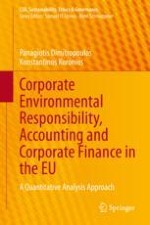The purpose of this book is to study the association of corporate environmental responsibility (CER) with financial performance, capital structure, innovative activities, corporate risk, working capital management and accounting quality. Undoubtedly, CER has been developed into a crucial corporate issue around the world. CER has been incorporated within various sectors, countries and includes many types of activities and dimensions. A fundamental issue that is addressed in this book, is how corporate finance and accounting are affected by CER activities and how it impacts company performance. In order to analyse this interrelation, the authors focus on a sample of firms from 28 EU member countries. The purpose of this book is to study the association of CER with financial performance, capital structure, innovative activities, corporate risk, working capital management and accounting quality. The book also intends to provide useful policy recommendations as well as to offer constructive impulses for future research.
